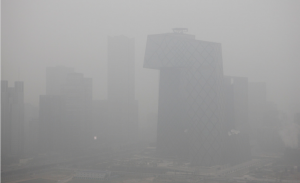Introduction
As one of the biggest cities in Canada, Richmond has been under increasing population pressure for a long time. Along with population pressure, many issues arise. Among these issues are rising housing price and transportaiton inefficiency. As one of the major ways of dealing with these problems, densification along its arterial roads policy has been permitted by the City in 1999. Ever since then, the City has tried to revise and improve the policy over the years, while the argument about this policy never ceaces.
Origin
Canada has one of the highest levels of urbanization in the world. Approxiamate 80% of Canada’s population are living in cities and towns.[1] Richomond, as one of the largest cities in Canada, has been facing the same situation. Housing intense and transportation inefficiency are two by-products of such population inflation. In response to these problems, the City of Richmond chose to use densification as a way to provide more affordable accommodations while improving the transportaiton efficiency. In 1999, the City officially permitted the densification along its arterial roads policy. And the City has reviewed and refined this policy over the years,including as part of the 2041 Official Community Plan(OCP) Update.[2]
What the arterial roads policy is
The objective of the policy is to “direct appropriate development onto certain arterial roads outside the City Centre”[3]. To be berief, the policy mainly incorporates two parts. One is to strenthen the level of investiment on public transit system in designated arterial road areas. Another is to increase the density of houses along the arterial roads by compacting lots of single-family houses with multi-family houses. The idea is not difficult to understand, because compared with a multi-family house, a single-family house usually occupy much larger land, which is not land-saving.
The areas covered by the policy is shown on the picture below[4](ALR is the abbreviation of Agricultural Land Reserve):
According to the population census conducted by the government of canada in 2012[5], it can be estimated that nearly 40% of total population lives in the affected areas.
Distributional effects and effectiveness in general
There has been two opposite voices since the day the policy was disigned. People who support the policy claim that urban land is not infinite and creating dense neighborhoods with multi-use development was the only option left for us. Compared with low density neighhoods, high density neighhoods are less car-dependent and hence much more envionmentally sustainable. Besides, high density neighborhoods are more lively and vibrant. We can combine mutiple styles of housing with commercial space and public space as well[6]. The move is aslo the part of an effort to alleviate affordable housing issues for low and middle-income families in the city, for multi-family housing tends to be less expensive.
Meanwhile, some people hold opinions highly against such policy. They claim that “ the decision to allow granny flats and coach houses to be built in residential Richmond is the beginning of the end for the city’s neighbourhoods.”[7] They said that the governent should have considered the feelings of the residents more before forcing the policy to go into effect. For one thing, many neighhoods of the City don’t’s have corresponding infrastructure, like community centers and schools, to deal with extra population. And the policy may lead to traffic congestion on some certain roads. For the increasing housing demand issue, they point out that this can be solved by finding a new place, like Langley, where housing development is built to cater solely to low-income families.
Conclusion
The policy has been released for years, while its implementation process proceeded slow because of the frequent protest from the residents and some politicians. Despite many potential benefits that can come from the policy, it seems like an another lively drama of “not in my backyard” is on show. As for me, I believe densification is an good choice to handle urbanlization issue, because this method has been proved by many cities in the world to be effective. However, I think it is better to think twice before jumping into this “city-rebuiding” project. For every city has its unique history and style, one successful model of a city may not applied to other cities. Just like the opponents say, we should calculate the potential benefits, but we also have to consider the potential cost from many different perspectives.
Reference:
[1] Densification. TRAC Tenant Resource & Advisory Center. http://www.tenants.bc.ca/main/?densification
[2] City of Richmond Policy Planning Devision. Arterial Road Policy. http://www.richmond.ca/plandev/planning2/landuse/arterial.htm
[3] City of Richmond Policy Planning Devision. Specifi c Policies and Guidelines. http://www.richmond.ca/__shared/assets/artrdpol35152.pdf
[4] City of Richmond Policy Planning Devision. Residential Redevelopment Along Richmond’s Arterial Roads. http://www.richmond.ca/__shared/assets/Residential_Redevelopment_along_Richmond_s_Arterial_Roads_-_PP-B-19197.pdf
[5] Population Hot Facts. http://www.richmond.ca/__shared/assets/Population_Hot_Facts6248.pdf
[6] Dylan King, Richmond News. Cities need densification http://www.richmond-news.com/business/Cities+need+densification/5504110/story.html
[7] Alan Campbell, Richmond News. Densification destroys neighbourhoods http://www.richmond-news.com/business/Densification+destroys+neighbourhoods/5468817/story.html



